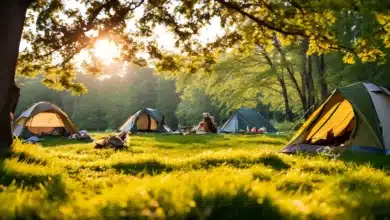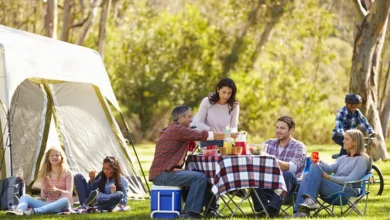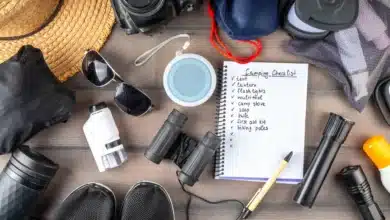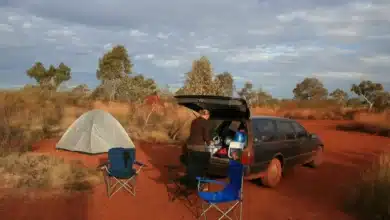6 Ways to Camp Without a Tent
While tents are often thought of as a requirement for camping, there are lots of other ways to camp without one. And thanks to modern technology, there are now tent alternatives that didn’t become popular until fairly recently.
Whether you are on a budget and don’t have a tent, or you’re looking to save some extra weight in your pack, I’ll show you 6 ways to camp without a tent.
Do You Need a Tent for Camping?
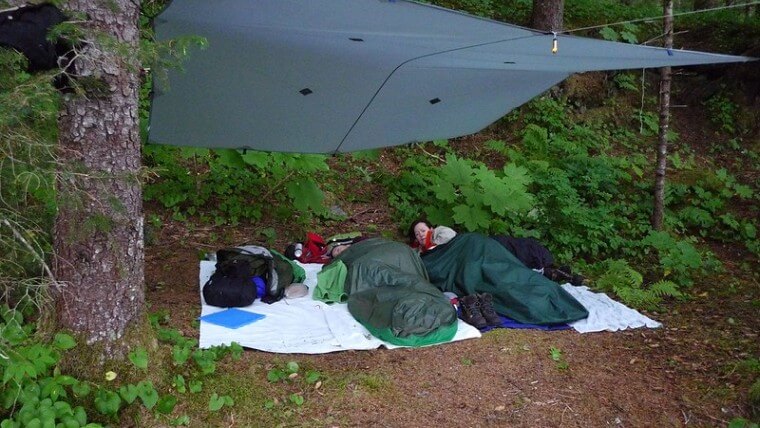
No, you don’t need a tent to go camping. Many alternatives include hammocks, tarps, bivies, and even just sleeping under the stars.
In fact, I haven’t used a tent for camping in years. My main choice for sleeping is in my hammock. They are so much more relaxing than tents. I’ve also slept in debris huts and even slept with nothing more than a wool blanket next to the fire.
And this isn’t just for backpacking. Even when I go car camping, I don’t bring a tent either. Tents are often heavy, take up space, take time to set up, and can be a real pain to pack up again.
Is Camping Without a Tent Safe?
In most cases, camping without a tent is considered safe.
Mainly, there are two dangers to consider:
- Weather
- Animals
If you are backcountry camping, both of these can potentially be an issue. You should always be prepared for the weather. That doesn’t necessarily mean bring a tent, but having proper rain gear while in the wilderness can save your life by preventing hypothermia.
Animals can be an issue, but animal attacks from bears and mountain lions are statistically rare. At campgrounds especially, animals prefer to keep their distance.
How to Go Camping Without a Tent
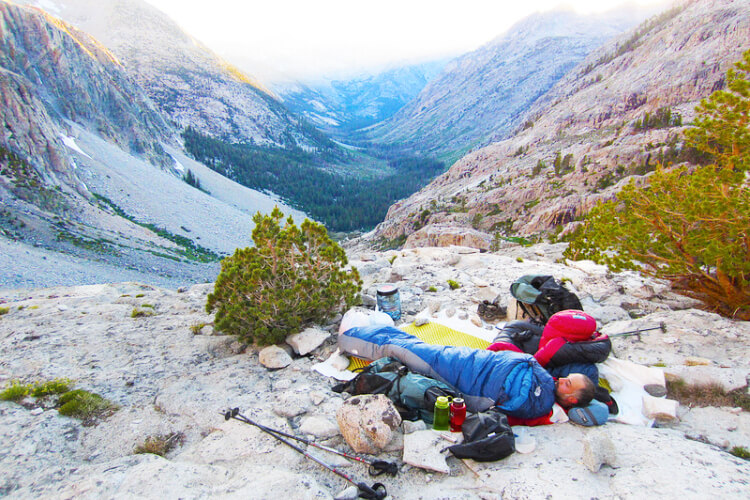
Before we dive into the 6 ways to go camping without a tent, it’s important to know that many of these alternatives can be used in combination.
Whichever your method, it’s important to understand gear concepts:
Ground tarp – Whether you are using a tent or not, a ground tarp is recommended. A ground tarp will help keep you and your gear clean, dry, and prevent damage. A regular tarp from Walmart will be fine but you can also pick up some from Amazon (like this one) that is much more compact.
Rainfly – Rainflys are just tarps designed to be lightweight. You can make your own from Walmart using a tarp and paracord. This will be bulkier than other options, but it works. You’ll most likely want to use a ridgeline to set between two trees for the tarp to hang against.
Sleeping Pad – Whichever tentless camping method you choose, a sleeping pad is important. Still, there are some sleeping pad alternatives you can use if you’re on a budget.
Sleeping Bag – A sleeping bag is another essential, especially in colder weather. In warmer weather, blankets or even sleeping bag liners will do be fine. Here are some sleeping bag alternatives.
While you technically don’t need any of these items, it’s an easy, cheap, and good combination to use. There are other options as well, such as bivys and hammocks, which I’ll discuss in detail later in under ‘Tent Alternatives’.
Now, the tent alternatives…
1. Tarp Shelter
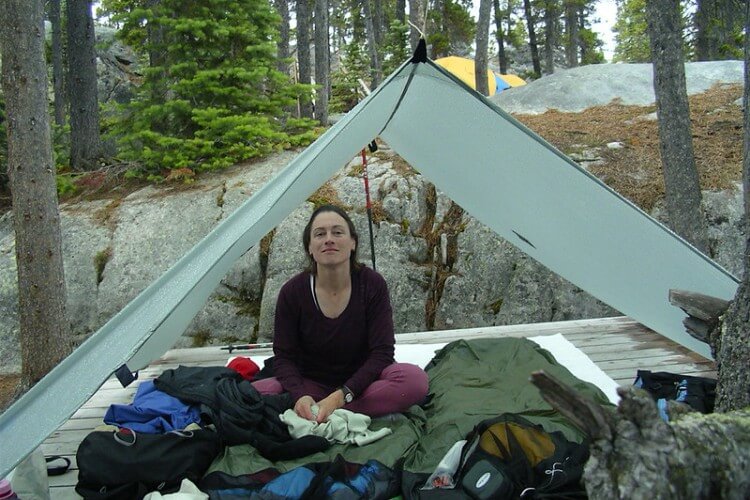
The tarp shelter is a popular tent alternative among ultralight backpackers. Instead of a tent, you use a tarp. This won’t keep out the bugs but can be a fine option to keep you dry without all the hassle.
There are a lot of different setups you can use for tarp camping. Some people use big tarps that provide full coverage on both sides, while others use minimalist tarps that cover just one side.
Here’s a great video that shows 5 popular tarp setups:
This is the tarp shown in the video on Amazon, however, there are some other options like the Unigear Hammock Rainfly.
If you need paracord, Amazon also has some good deals.
2. Hammock
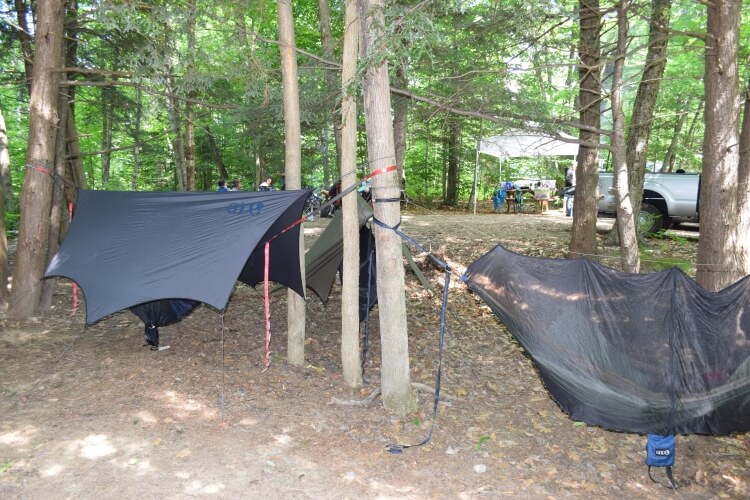
A hammock is my first choice when I go camping. I actually bring two to help convert tenters over to the dark side. But really, I find them more fun and relaxing. I hate sleeping on the ground without substantial cushion (my hips get sore easily).
I personally own an ENO Hammock, but other great options like the SunYear Hammock on Amazon that have a built-in bug net and come with straps. This is a good option as it can get quite pricey ordering everything separately.
If there’s any chance of rain, you’ll still need a rainfly. For this, you don’t need anything fancy. You can pick up some paracord and buy a cheap one from Walmart. It might not be as compact, but it will be a lot more durable. Rainflys are still handy even if it doesn’t rain. Since you’re sleeping under trees, sometimes you might get tiny twigs or pine needles that fall on you.
I usually used my closed-cell foam sleeping pad in the hammock with some blankets. But on unusually warm or humid nights, I’ll just use my hammock and nothing else.
One downside to hammocks is after you buy the hammock, straps, bug net, and rain fly, it can get a little expensive. Having just a hammock will be much cheaper, so something to be aware of if you’re on a budget.
You may also like Best Camping Pillows
3. Bivy Sack and Bivy Shelter
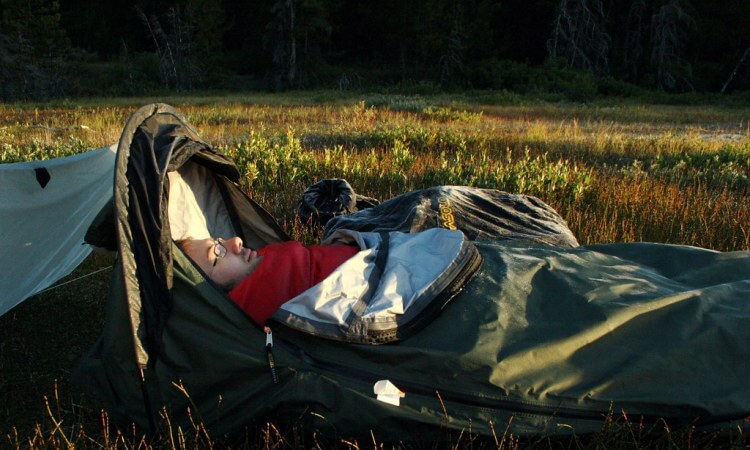
The bivy is another favorite and is most popular among minimalist, backpackers, and bike campers. The main appeal is that you get all the protection you need while saving weight and space in your pack.
A bivy sack is a weatherproof shelter that goes around your sleeping bag. Just like a tent, they keep out the rain and bugs. They also come with durable bottoms for added protection and keep water out. Some of them are even made from Gortex, making it much more waterproof and breathable.
A bivy shelter is the same thing as a bivy sack except that it comes with poles to allow more room. For those who don’t’ like material on their head, this is an option that doesn’t require too much extra work.
While these can save a lot of weight and space, the downside is they don’t offer any space to hold your gear. Another potential drawback is they get warmer in the summer.
You may also like Best Extreme Weather Tents
4. Sleep Inside Your Car
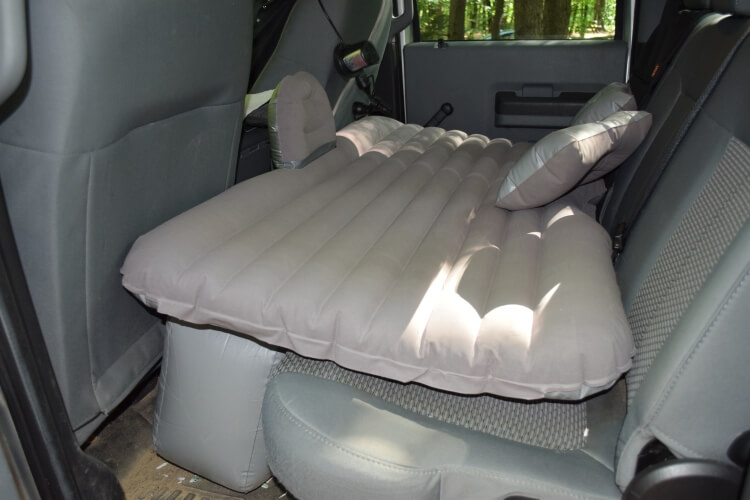
If you don’t have a tent, sleeping in your car or truck is always an option. Having slept in my car many of times during my cross country road trip, I know how hard it can be to find enough space and sleep comfortably at the same time.
The trick to sleeping in your car is:
- The right space
- The right bedding
If you have seats that fold down flat, this will help a lot. You can just put a sleeping bag down, grab some blankets and a pillow, and are good to go.
However, most cars don’t have this feature. What can help is buying a car mattress. These are blow-up mattresses that lay on the seats, making a flat surface.
The only real downside to this method is like all mattresses, they can deflate over during the night. Many though come with inflators that you plug into your car’s electrical outlet.
You may also like What Is Car Camping? (And How to Do It)
5. Cowboy Camping
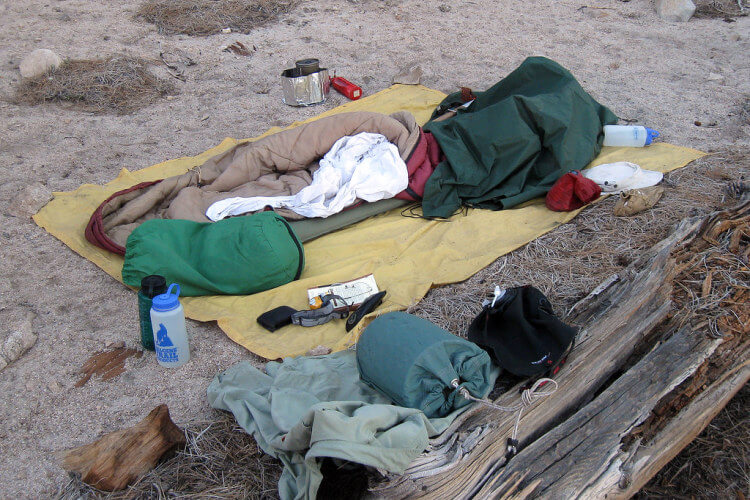
Another option to go tentless camping is to not use anything at all. Cowboy camping is sleeping under the stars without any kind of shelter. I’ve actually done this on a weekend survival trip where I slept on the ground next to a fire with only a wool blanket. While it wasn’t the most comfortable, it was a really cool experience.
If you’re the person that can sleep against a tree or a rock, then consider yourself a good sleeper. Most of us though will need some type of bedding. There are lots of camping pillow alternatives you can use, including wrapping your water bladder in a t-shirt.
As for a bed, you can gather two large logs and place them parallel 3 feet apart. Then, fill in the rest with any soft material you can find, such as leaves and pine needles.
6. Survival Shelter
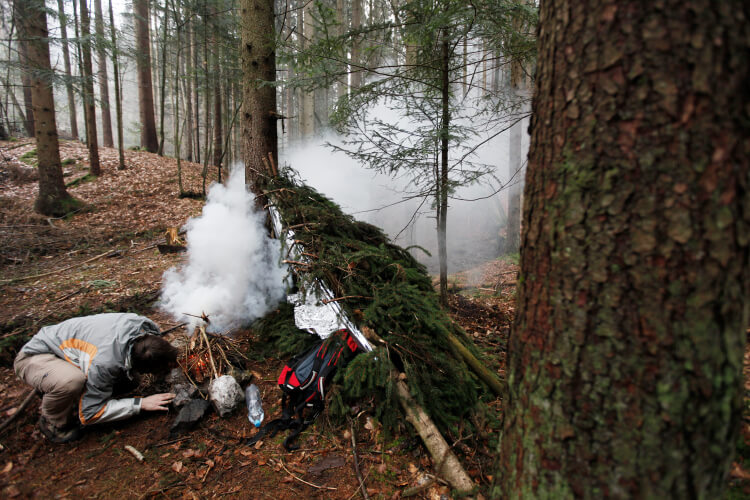
Alright, most people won’t like this method, but it can work, especially if you find yourself in a bad situation and need to spend the night. This also won’t work everywhere depending on your local environment.
There are various style shelters you can build. Most of them involve creating a type of frame or ridgeline and adding sticks to the sides. Once you have enough sticks, you can start pilling on leaves.
Fair warning, this can take a bit of time and energy to build, as much as a few hours. I wouldn’t recommend this method unless you are in a survival situation or practicing your skills.
And remember, always make sure you tear down the shelter and leave the site as you found it.
You may also like Easiest Tents to Set Up by Yourself
Advantages to Tents
While you don’t need a tent to go camping, a lot of times they make the most sense. If you are car camping with kids or pets, tents can help a lot.
Here are some reasons why you might want to choose a tent after all:
- Space Benefits -A tent allows a lot more room to store and organize gear as well as change clothes. It’s nice to be able to have everything organized and accessible and not get lost.
- Privacy – At campgrounds especially, you’ll want the privacy to undress or have intimate time with your partner.
- Bug Protection – Having a sealed tent will help keep those pesky bugs out so you don’t have reasons to hate camping.
- Psychological Comfort – Sleeping without having a fully enclosed barrier is unsettling for some. Just having 4 walls around you can offer a lot of comfort and put your mind at ease.
—
Featured photo credit: Umnak on VisualHunt / CC BY-SA
